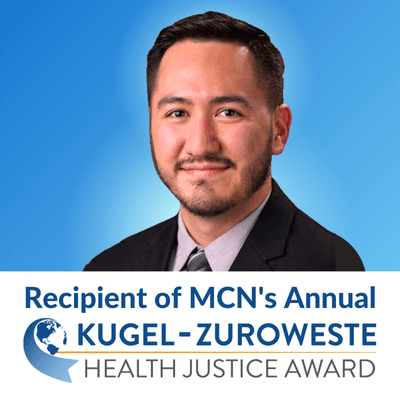How Many Barriers to Care Can One Asylum-Seeking Patient Encounter?

How many barriers to care can one asylum-seeking patient encounter? In this case, too many. Five-year-old Anita* crossed the US-Mexico border with her mother and father. She has spina bifida, as well as bilateral hip dysplasia and a neurogenic bladder that leads to frequent urinary tract infections. Even under more stable conditions, in which she was not moving, finding care would be challenging and expensive.
Her first obstacle was in detention. Her equipment to self-catheterize was confiscated by Border Patrol officials after she and her parents asked for asylum. Anita’s parents ensured she self-catheterized every four hours back home in Guatemala; now, in the detention facility, she couldn’t do it at all. When they were released, pending their immigration hearing, their supplies were not returned. After release, Anita was seen by a clinician at an immigration shelter in Texas, who enrolled her to Health Network for her complicated and urgent care.
Health Network is Migrant Clinicians Network’s virtual case management program for migrants with ongoing health needs. Health Network’s Luis Retta, who worked for patients co-enrolled in Specialty Care Access Network (SCAN), took Anita’s case. SCAN is an arm of Health Network that connects children with specialty care needs with volunteer specialty care clinicians across the country, in addition to the primary care connection that Health Network already provides.
As Anita traveled with her parents from the immigration shelter to her next destination in the US South, Luis began to contact clinicians who could help her in her new region. He first contacted the SCAN Champion – a volunteer clinician in the region to where she was moving who could help connect her with the specialty care she needs. Under the SCAN champion’s suggestion, he also found local clinics so that Anita could establish primary care at a local health center. He called the health center to get Anita a primary care appointment.
Anita’s second obstacle was that the health center near her new home required the family to call and schedule an appointment – they wouldn’t permit Luis to schedule on her behalf. Luckily, Luis was able to get the information to Anita’s family once they arrived, and Anita’s aunt called the clinic and scheduled an appointment.
Unfortunately, the health center turned Anita away, because she did not have health insurance, a common barrier for new arrivals. She was ineligible for the health center’s sliding scale fee because her family could not prove residency. As new arrivals, they did not have a government-issued ID, proof of income, or proof of residency like bills mailed to their new house. These significant barriers result in many of Health Network’s patients being turned away from vital care.
In the meantime, without regular catheterization, Anita had developed a bladder infection. Her family brought her to a local children’s hospital, and this is when Anita’s luck changed. The hospital paired her family with a case worker, who helped her connect with care within the hospital system. As a larger establishment, the hospital was more equipped to serve a patient like Anita.
In the following weeks, thanks to Anita’s team working on her behalf -- Luis, the hospital case worker, and the SCAN champion -- Anita got new catheterization supplies, was referred to a primary care provider at a clinic that would accept her and was connected to a spina bifida specialist. She was also referred to an eye appointment at a local clinic. Over the course of six months, Health Network case managers talked with Anita’s family eight times and contacted numerous clinics on their behalf. Once Anita was settled in her new home, and her care plan had been established, the Health Network team documented her referrals and medical records and set the case to close.
Anita found care – but many other asylum-seeking children do not. Health Network helped to remove some of the barriers they faced, and the children’s hospital stepped in to remove many more, but many families are not so lucky. The safety net’s holes are large and unforgiving for asylum-seeking families. When asylum-seeking families are released from detention, they are not provided with case management; Health Network cannot provide for all families, as it presently only works with a handful of immigration shelters and has limited funding. Many families are left on their own to navigate a foreign health system. Language, culture, transportation, and financial inability run up against a lack of documentation of residency or proof of identity. For many families, these barriers prevent them from seeking care, until the health need becomes an emergency.
Learn more about Health Network here. Read about SCAN here. Support Health Network and SCAN by making a donation to MCN, so we can serve more asylum-seeking children like Anita.
*Name and some details have been altered to protect the patient’s identity.
- Log in to post comments






